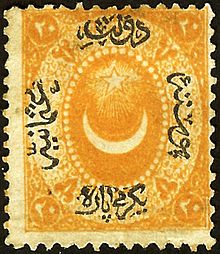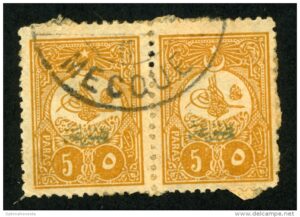 What Can Be Done: Turkey is one of the longest inhabited regions of the world and one of the first and oldest centers of sophisticated civilization (the eastern Roman Empire continued to exist, with its capital at Constantinople, until 1453- nearly a thousand years after the Rome itself fell). It is also one of the most interesting countries to collect in all of philately. The classics are fascinating, fairly crude in printing and design, and are hard to find. They are unlike any other stamps in our hobby. There are many scarce and rare items in the nineteenth century, but so many of the stamps are easily obtainable, that it makes the attempt for completion very enjoyable. The early twentieth century is a collecting specialty all of its own with internal Turkish politics and allied occupation after WW I producing hundreds of interesting collecting varieties. After about 1920, Turkish stamp issues become much more like those of most other nations, and have their own well designed beauty and colorfulness. For many years stamp writers have predicted a flurry of interest in Turkey, as the country has grown in wealth and continued to embrace entry into the European community.
What Can Be Done: Turkey is one of the longest inhabited regions of the world and one of the first and oldest centers of sophisticated civilization (the eastern Roman Empire continued to exist, with its capital at Constantinople, until 1453- nearly a thousand years after the Rome itself fell). It is also one of the most interesting countries to collect in all of philately. The classics are fascinating, fairly crude in printing and design, and are hard to find. They are unlike any other stamps in our hobby. There are many scarce and rare items in the nineteenth century, but so many of the stamps are easily obtainable, that it makes the attempt for completion very enjoyable. The early twentieth century is a collecting specialty all of its own with internal Turkish politics and allied occupation after WW I producing hundreds of interesting collecting varieties. After about 1920, Turkish stamp issues become much more like those of most other nations, and have their own well designed beauty and colorfulness. For many years stamp writers have predicted a flurry of interest in Turkey, as the country has grown in wealth and continued to embrace entry into the European community.
Turkey offers more to collectors than just the ordinary stamps. Before WW I Turkey had effective political control over and maintained post offices throughout most of the Middle East. Turkish stamps were used in all of the Syrian, Lebanese, Saudi Arabian, and Palestinian towns. Such instances of postal use can only be told by reading the cancellation, which, because they are in Arabic, can be difficult for many Westerners. Many collectors specialize in these scarce usages. Turkish philately has further interest for specialists in that though Turkey controlled vast areas of the Middle East, such control was often casual. Many European nations maintained post offices in Turkey and in the Middle East and hundreds of different stamp issues are known from Italy, Germany, Great Britain, and France for use in Turkey and it territories. These stamps are very popular.
Specialized Catalogs: For the mainstream three thousand or so basic i ssues of Turkey, the Scott Classic catalog and the regular Scott catalog are quite good. For European post office issues for use in the Turkish Empire, you have to go to the back of the listings for the country that issued the stamps. This can mean, that if you don’t have a Scott Classic catalog, which list the world through to 1940, you have to buy and use many different volumes of the Scott catalog which is cumbersome. Turkish stamps that are used in its territories and which have Arabic cancellations are hard to find listings for.
ssues of Turkey, the Scott Classic catalog and the regular Scott catalog are quite good. For European post office issues for use in the Turkish Empire, you have to go to the back of the listings for the country that issued the stamps. This can mean, that if you don’t have a Scott Classic catalog, which list the world through to 1940, you have to buy and use many different volumes of the Scott catalog which is cumbersome. Turkish stamps that are used in its territories and which have Arabic cancellations are hard to find listings for.
Specialized Albums: Turkey is one of the countries where I recommend the Scott Specialty album. For most countries, the Lighthouse specialty album which is more luxurious, though far more expensive, is worth the price difference. But the Turkey Scott album is very good and in only two volumes, so it is far cheaper, than the five or six volumes that Lighthouse expands this country to.
Availability of Material: One of the most appealing aspects of collecting Turkey is how plentiful good material is. There are thousands of stamps to collect so, unless you’ve been at it for quite some time, there should always be something that you can find that you need for not too much money. Viewing the varying specialty listings can be fun and informative, as you fill in your main collection and make you a shrewder buyer when you move onto more specialized material.
Expense: The total cost of collecting Turkey can be high because there are so many stamps. There are a few rarities. I suggest, that you buy the many scarcer overprinted issues from reputable sources, as forgeries are known.
Overall grade: A
